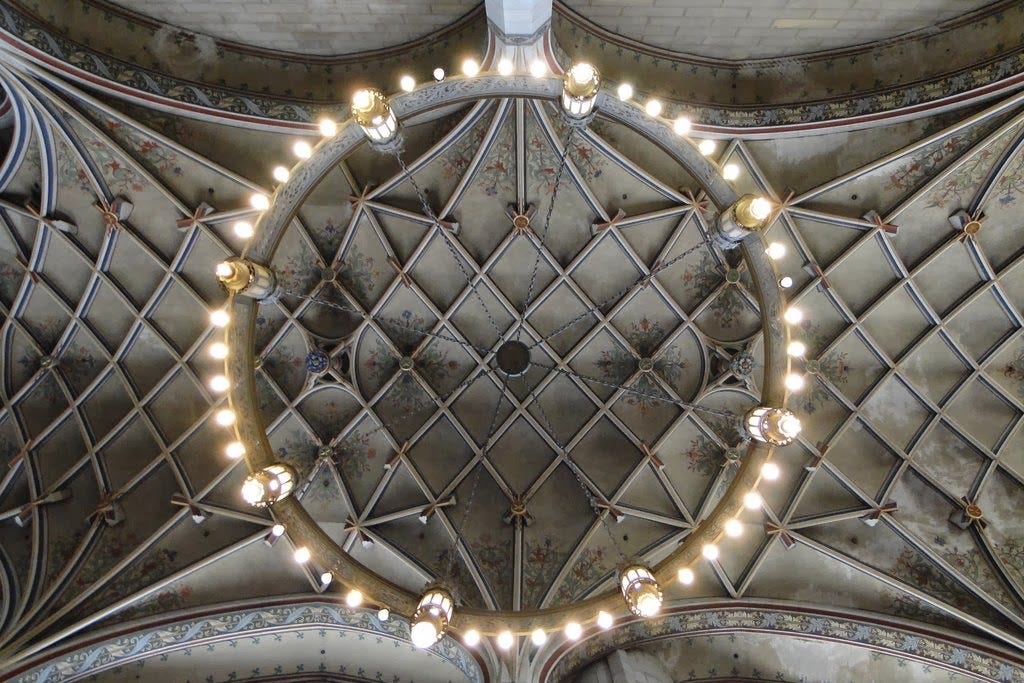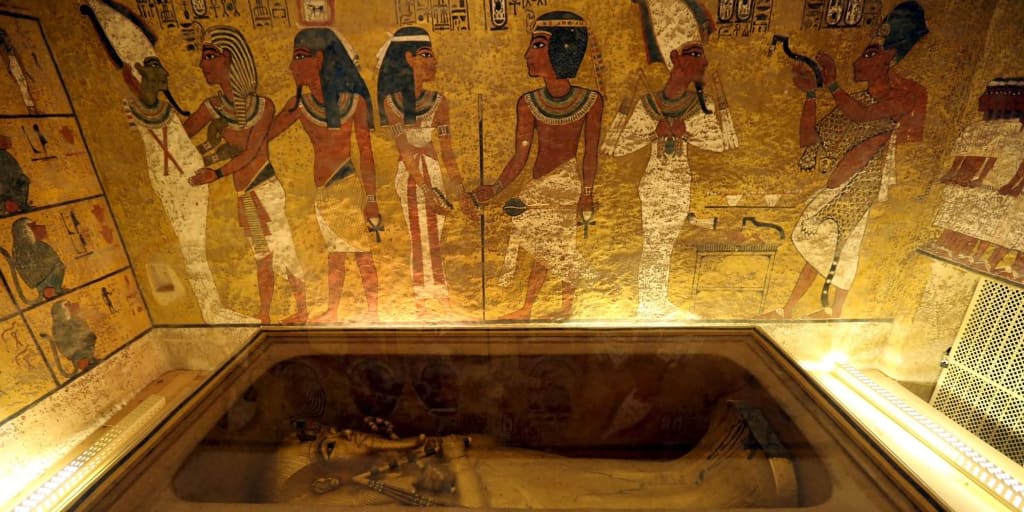Robert Alice's "Portraits of a Mind": A Memorial to Entelechy Through Time
The "Portraits of a Mind" physical art and NFT project is a monument to text
When I congratulate Ben Gentili (aka Robert Alice) on his personal auction record at Sotheby’s on April 27, he seems subdued. It’s not the sale record that is interesting to him.

What really interests him is seeing his physical art objects make it into the Sotheby’s Contemporary Evening Sale.
Gentili’s part-painting / part-NFT / part-conceptual art sculpture takes the original version of the Bitcoin protocol authored by Satoshi Nakamoto, and displays all of the code as numerical text on 40 large circular “blocks”. More on the project here.
That geo-coordinates etched into each piece mark a physical place where something in human history sparked a technological innovation. Ideally, the blocks are displayed at the sites of their historical marker, as “Block 34” recently was at Sealand, off the UK coast.
Gentili has positioned “Portraits of a Mind” as a textual monument to the entelechy of software and other technological breakthroughs that have moved humanity forward to reach humanity’s potential.
Software Codebase is a Revolution Packaged in Hexadecimal Linguistics
Nearly all great revolutions in philosophical history, nationhood, and religious seismic shifts marked their advents in text.
Karl Marx wrote the Communist Manifesto in the British Library. Thomas Bede wrote a seminal history of Britain. Martin Luther nailed the 95 theses to the door of the Castle Church of Wittenberg to politely suggest the Protestant Reformation.

And Satoshi Nakamoto created software that solved the double-spend problem and created a new form of money.
The problem with such cryptography algorithms is that they are not cathedrals; they are hidden, running quietly on machines. Maybe because it runs in the background, nobody was really making art to honour the blockchain innovation.
“I thought that taking it from the digital world into the physical world makes it much more humanely relatable,” says Gentili.
“I spent a long time thinking to myself; I wanted to make something around the icons of the space, and I think that great art is playing with and messing around with icons, and also kind of hidden icons,” he says.

Gentili’s work has received accolades for its beauty and its abstractedness.
Most reviews of the art miss how labour-intensive it was to make, and how it relies on a form of language / text to instil its subject with the mystery and activation that are inherent to the blockchain.
“It’s physical and very messy,” he says.
To make each block, Gentili would apply a substrate of thick coats of paint, and sand it down, then send the sanded pieces to a facility and have the hexadecimal code engraved on them. Then returning the work to his studio, he had each laid on a table, where he would use a very fine brush — size .1, he tells me — to trace the decimals with a lustrous silver paint, using gold to illuminate the geographical codes embedded in the circular lines that indicate the location in the world related to the block.
He produced 80-90 canvases, he says, to get to the 40 that now exist. “The attrition rate was high; if you made a mistake with the painting, you had to start again,” he says.
You can see a pair of trousers he’s wearing in the publicity photo above. I ask him if that was just marketing, or if that really was the state of things.
“The paint on those clothes is real. I have a pair of trousers at home that are literally like stand-up trousers, they have so much paint on them they could actually stand up.”
He would work over the art on a table, but unlike a medieval scribe, he was not transferring the computation from one record to the block. “In some sense, I am paying attention to the characters, but I am not transcribing,” he says.
This focus on the software language is not just a homage to Nakamoto in the text. Gentili describes two other artists as “original blockchain artists” — On Karawa and Roman Opalka.
A painter, Karawa, having grown unsettled at some sculpture experiments in the 1960s, returned to painting and worked on issues with language, specifically working in code. The resulting paintings were later destroyed. But Gentili thinks they are important works in early attempts at finding a discourse between the signifying act of language use and identity.
Polish conceptual artist Roman Opalka worked for most of his later life on a project involving the semantics of numbers and identity called Opalka 1965 / 1 - ∞.
This project documented the numbers 1 to infinity, taking something abstract and intangible and through a process of ritual and focus turned them into something like a monument and an abstract calendar record of his life.
Gentili not only works with these same abstract and modernist concepts. He works also using an idea common to the art of primitive people, the Ancient Egyptians, and the Greeks — that the art object is not just an objectively beautiful depiction of reality or an idea, but that it is an actual totem that enables some mastery over reality.
Just as language can be said to hold magical properties through the act of naming or describing, the work of mathematical logic and the translation of code into machine operation through binary instruction creates the “magic” of entelechy.
In other words, software testing and engineering takes something that has potential and makes it actual.
Done right, it can create some kind of human change.
In the art of primitive people, we see the paintings at Lascaux. To contemporary and modern explorers of archaeology, the discovery of these caves in France was a fascinating realisation of how people used art to tell stories or document truths. The belief was that by marking down the shapes of the animals they saw, the hunter-tribespeople then claimed some kind of magical power of them. The creatures were endowed with the good fortune that they hoped would befall them by hunting them.

The Egyptians were like this, too. They painted and sculpted art for kings that depicted all the servants and the luxuries of life, so that their journey through the afterlife would be safe and would offer them everything they might desire.
It wasn’t about the depiction of the art object, or making it exactly like reality. It was simply the process of putting together the art itself to cast the magical spell.
When you look at any of the NFTs that Gentili has put together to go with each of these blocks, you will notice that they are geo-coordinated, meaning that during the times between sunrise and sunset, the NFT “turns on,” displaying its art to whomever might pass through during those hours.
Here Gentili has done something subtle, but it’s something that I think will mark the creation of future NFTs that unlock our connection to the metaverse. He shows that even something as abstract as digital art — even something as intangible — is as conspicuous and in sync with our time in our reality.
It is part us and part art. It is an object that connects us to a wider universe of potential in the web and across the networks of social and technological revolution.







